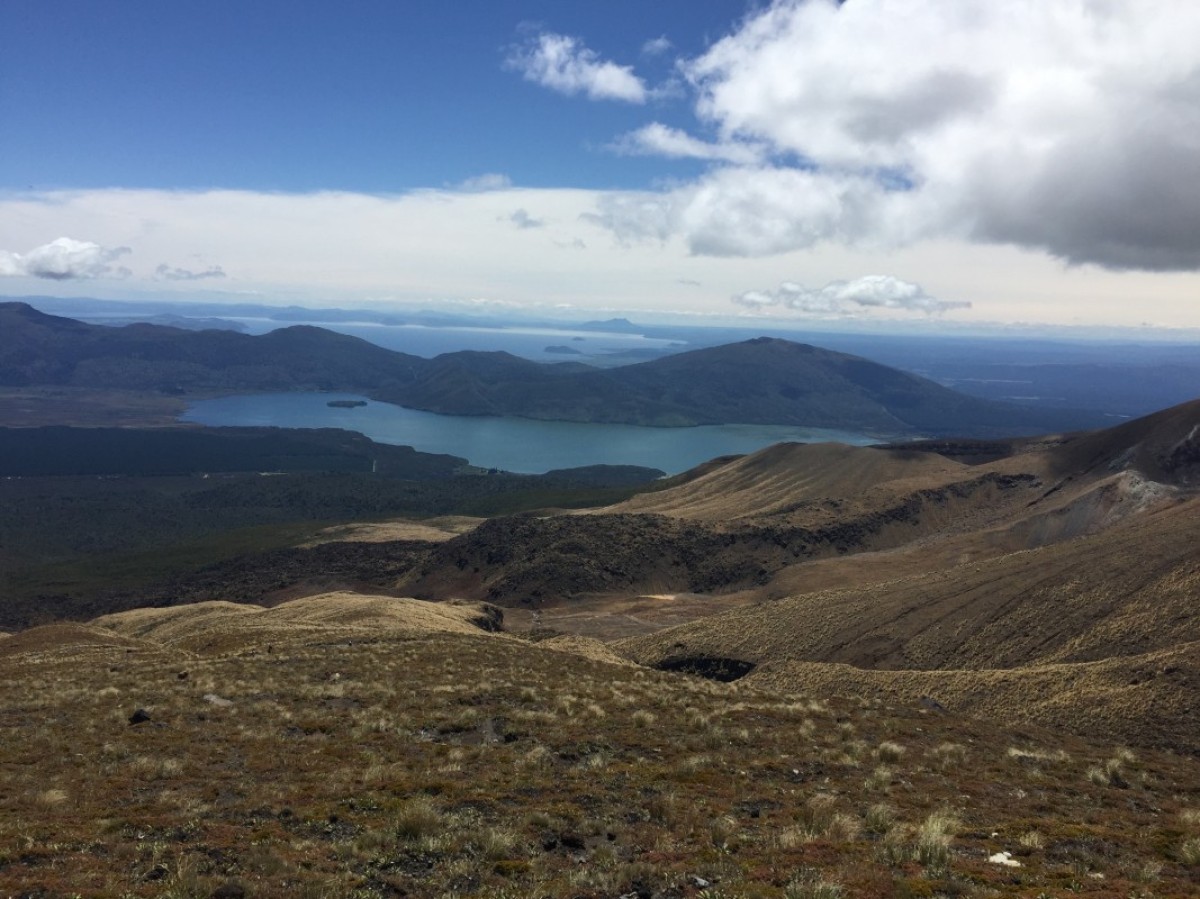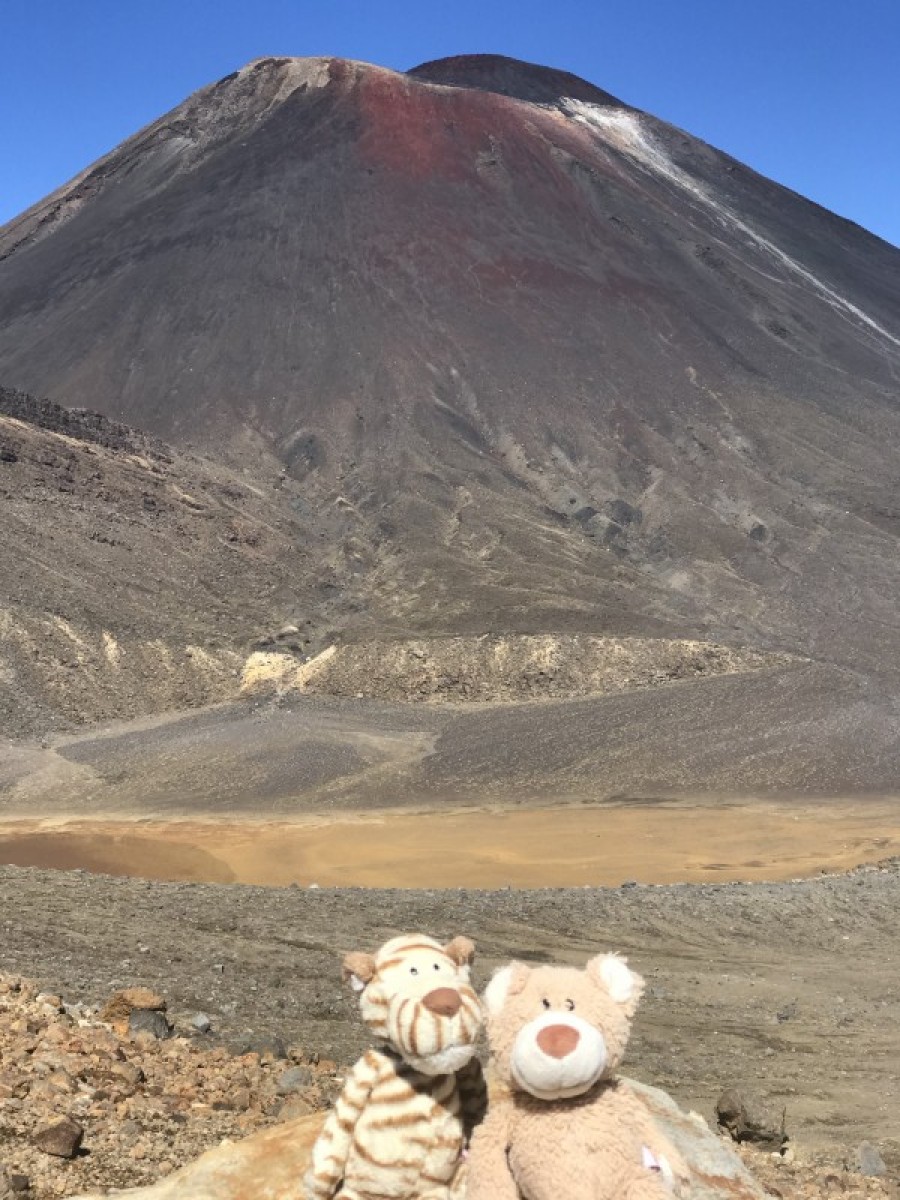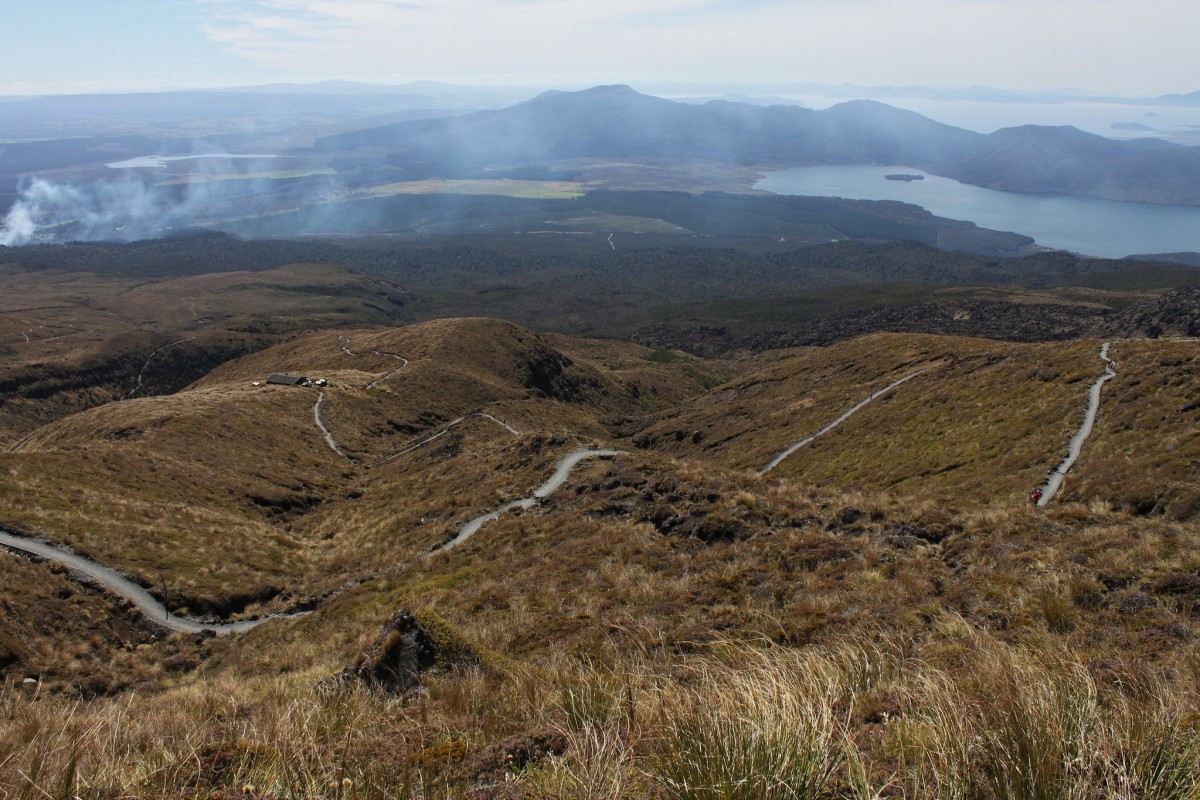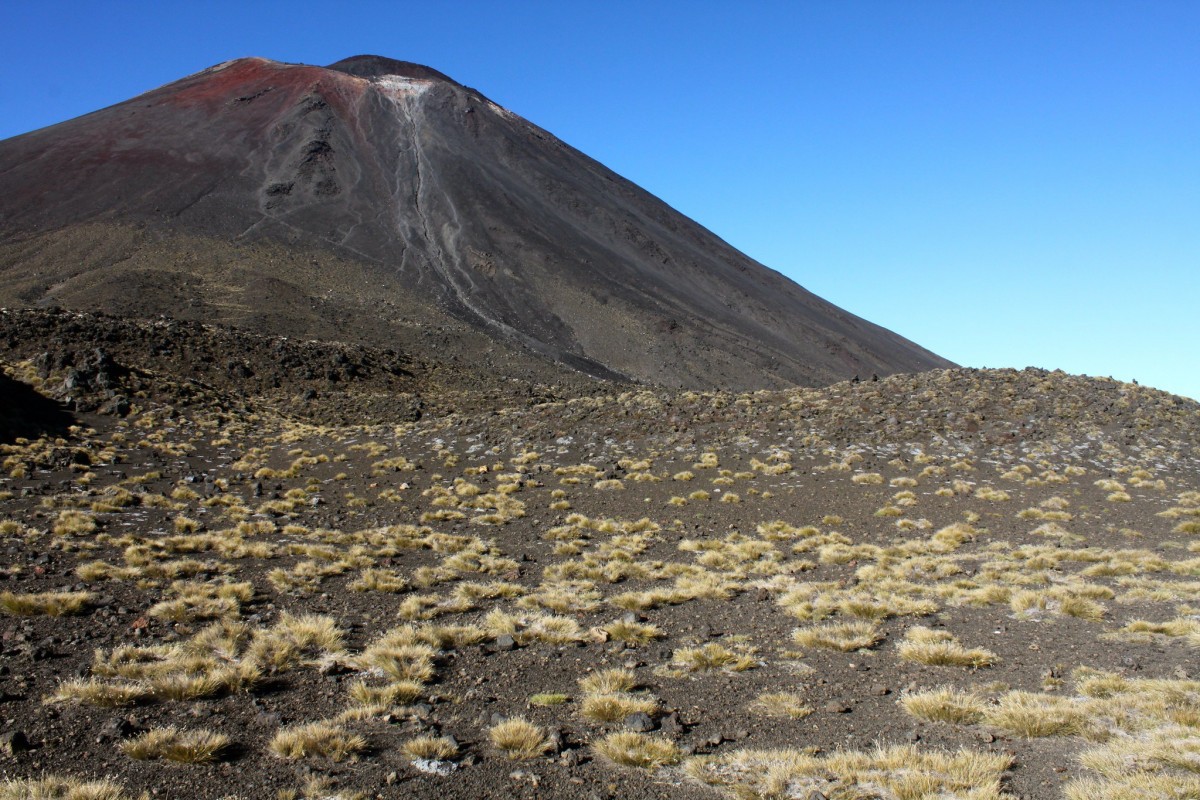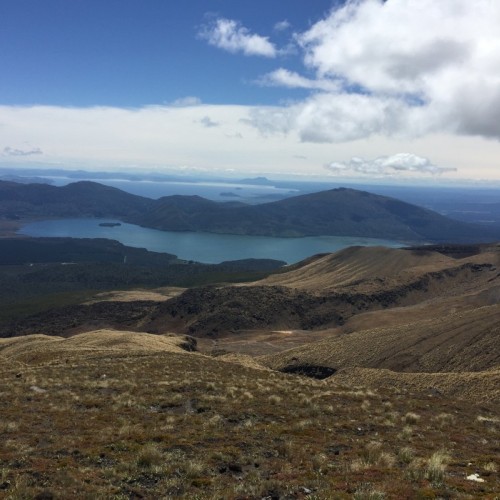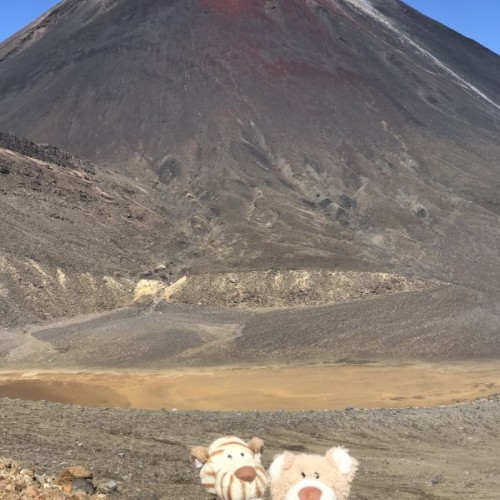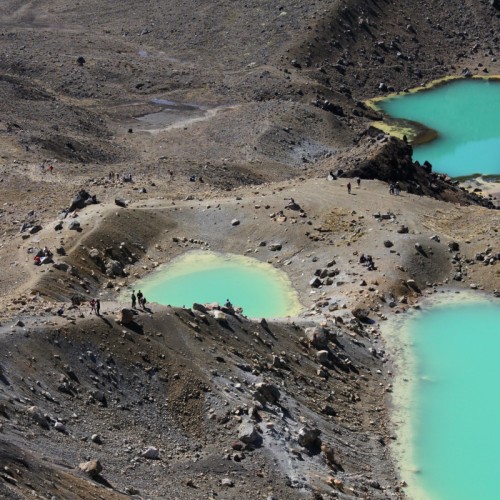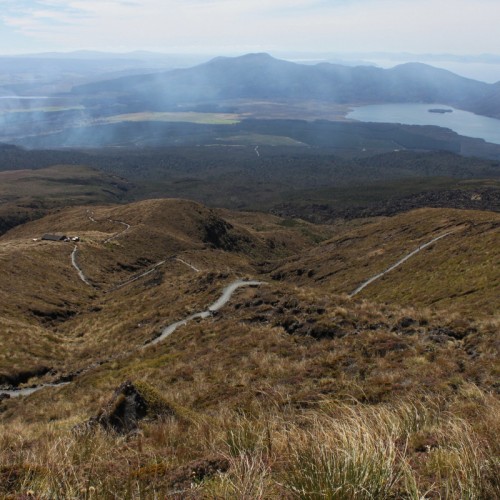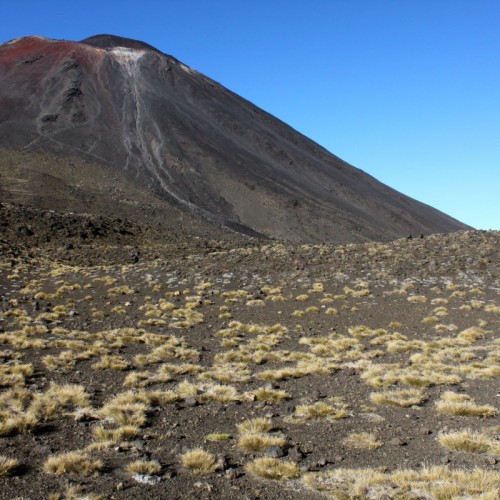From November to May, trek across a volcanic alpine landscape of dramatic contrasts. From June to October, snow and ice means alpine skills and experience are essential - it's best to go with guide or choose another track.
Walking in June to October
You need special skills and preparation to complete the Tongariro Alpine Crossing in winter (June to October). There are increased risks from snow, ice, avalanche terrain and sub-zero temperatures.
- Track standard: Route
- Track surface: Track is covered in snow and very icy in sections.
- Suitable for: People with alpine skills, equipment and experience.
- You must:
- know how to navigate if cloud or snow covers the marker poles and you cannot see them
- know where avalanches are a risk and be able to rescue someone if an avalanche occurs
- have the equipment and skills to prevent a slide on icy terrain
- have the clothing for sub-zero temperatures and be able to survive if the weather get worse.
Prepare for a long, challenging day
- Allow 9 hours to complete the walk
- There are between 9 and 11 hours of daylight in winter, so leave early enough to complete the trip before it gets dark
- Always take a head torch.
- Be prepared to turn back if conditions are no longer safe or if your progress is too slow.
Dress for cold, windy and icy conditions
On a calm day, Red Crater is at least 10°C colder than Taupō and 5°C colder than the start of the track – subtract another 2°C for every 10 km/h of wind:
Eg, when it’s 10°C (50°F) in Taupō, a calm day at Red Crater will be about 2°C (35°F). This feels more like -2°C (28°F) with moderate winds of 20 km/h (11 knots).
Conditions can change quickly. Layer your clothes to trap warm air in and keep cold wind out. Start with a base layer of polypropylene/merino, add an insulation layer of fleece/wool and finish with a waterproof shell layer.
Expect ice on the track between April and October. A helmet, crampons and ice axe are essential, as is competency using them. 38% of tramping injuries are from slipping.
Be avalanche alert
Avalanches are a hazard. Know the avalanche forecast
Take an avalanche transceiver, avalanche probe and snow shovel, and be competent using them.
Take these essentials
- Plenty of drinking water (water along the track is not suitable for drinking), food and toilet paper
- Waterproof jacket and pants, hat, gloves, sunscreen, and warm, layered clothing
- Sturdy tramping or mountaineering boots
- Crampons, ice axe, and helmet
- Avalanche transceiver, avalanche probe, and snow shovel
- Mobile phone, personal locator beacon (PLB), head torch and spare batteries
- Map, compass and/or GPS
- Make a plan
- Talk with someone at the Tongariro National Park Visitor Centre who knows the current conditions.
Check the latest:
- avalanche forecast – New Zealand Avalanche Advisory website
- volcanic alert level – GeoNet website
- weather forecast – MetService website
- Know the route – deep snow can hide track markers.
- Shuttle buses generally don't operate during winter, but guided trips include transport.
Go with a guide
Know your limits. Have a memorable and safe experience with the following approved Tongariro Alpine Crossing guiding companies:
- Tongariro Guided Walks
- Adventure Outdoors Tongariro
- Adrift Tongariro Guiding
Walking in June to October
You need special skills and preparation to complete the Tongariro Alpine Crossing in winter (June to October). There are increased risks from snow, ice, avalanche terrain and sub-zero temperatures.
- Track standard: Route
- Track surface: Track is covered in snow and very icy in sections.
- Suitable for: People with alpine skills, equipment and experience. You must:
- know how to navigate if cloud or snow covers the marker poles and you cannot see them
- know where avalanches are a risk and be able to rescue someone if an avalanche occurs
- have the equipment and skills to prevent a slide on icy terrain
- have the clothing for sub-zero temperatures and be able to survive if the weather get worse
Prepare for a long, challenging day
- Allow 9 hours to complete the walk. There are between 9 and 11 hours of daylight in winter, so leave early enough to complete the trip before it gets dark. Always take a head torch.
- Be prepared to turn back if conditions are no longer safe or if your progress is too slow.
Dress for cold, windy and icy conditions
On a calm day, Red Crater is at least 10°C colder than Taupō and 5°C colder than the start of the track – subtract another 2°C for every 10 km/h of wind:
Eg, when it’s 10°C (50°F) in Taupō, a calm day at Red Crater will be about 2°C (35°F). This feels more like -2°C (28°F) with moderate winds of 20 km/h (11 knots).
Conditions can change quickly. Layer your clothes to trap warm air in and keep cold wind out. Start with a base layer of polypropylene/merino, add an insulation layer of fleece/wool and finish with a waterproof shell layer.
Expect ice on the track between April and October. A helmet, crampons and ice axe are essential, as is competency using them. 38% of tramping injuries are from slipping.
Be avalanche alert
Avalanches are a hazard. Know the avalanche forecast (external site). Take an avalanche transceiver, avalanche probe and snow shovel, and be competent using them.
Map of avalanche terrain on Tongariro Alpine Crossing (PDF, 1721K) (opens in new window)
Take these essentials
- Plenty of drinking water (water along the track is not suitable for drinking), food and toilet paper
- Waterproof jacket and pants, hat, gloves, sunscreen, and warm, layered clothing
- Sturdy tramping or mountaineering boots
- Crampons, ice axe and helmet
- Avalanche transceiver, avalanche probe and snow shovel
- Mobile phone, personal locator beacon (PLB), head torch and spare batteries
- Map, compass and/or GPS
Make a plan
Talk with someone at the Tongariro National Park Visitor Centre who knows the current conditions.
Check the latest:
- avalanche forecast – New Zealand Avalanche Advisory website
- volcanic alert level – GeoNet website
- weather forecast – MetService website
- Know the route – deep snow can hide track markers
- Shuttle buses generally don't operate during winter, but guided trips include transport
Go with a guide
Know your limits. Have a memorable and safe experience with the following approved Tongariro Alpine Crossing guiding companies:
- Tongariro Guided Walks
- Adventure Outdoors Tongariro
- Adrift Tongariro Guiding
Source: Department of Conservation


